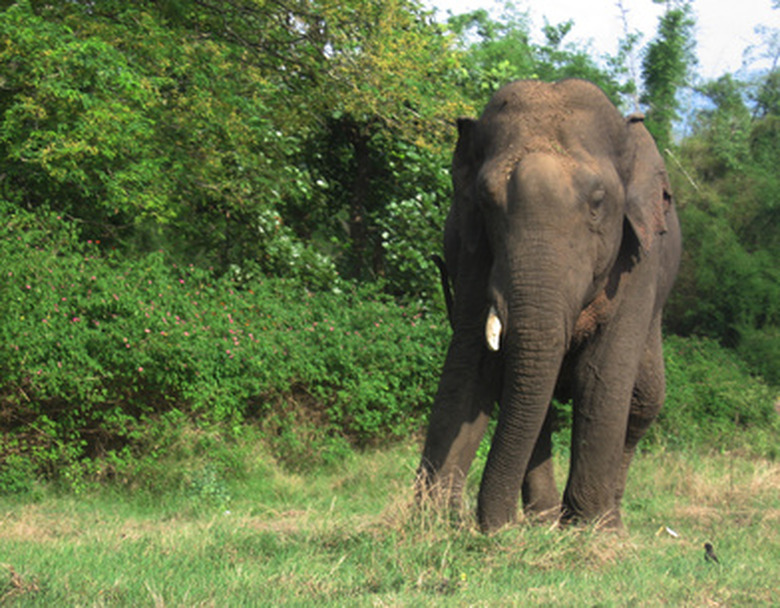The Natural Habitat Of Elephants
Elephants are the largest of all living land animals, capable of growing up to 11 feet tall and weighing 14,000 pounds, in the case of the African elephant. There are several elephant species. They are, as a group, distributed across a wide range of habitats, but each species has its own unique traits and living conditions relative to its geographic distribution.
African Elephant
African Elephant
African elephants are perhaps the best-known species, with large flapping ears to help keep them cool in sub-Sahara Africa. The majority of African elephants live in open savannahs, areas characterized by wide fields of grasses, dry woodland and little water. The Africa elephants will travel long distances to find water each day and are more nomadic than other species. They live wherever they can find enough food to support their populations, in herds scattered across most of Africa.
Asian Elephant
Asian Elephant
The majority of Asian elephant populations are in India, where the elephants stay close to water. Their habitat is vastly different from that of the African elephant, and is primarily tropical rainforest and scattered sections of forest meadows, areas which often fluctuate between meadow and water hole depending on season. The climate is relatively temperate throughout most of the year, and vegetation is dense in these regions.
Elephant Subspecies
Elephant Subspecies
There are several recognized subspecies of both African and Asian elephants, which are described and distinguished by their habitat preferences and location. The two African subspecies are the savannah elephant and the less common forest elephant, which maintains ranges in the more vegetated scrub forests of Africa. Among the Asian elephants, populations are divided between the Indian, Sumatran, and Sri Lankan groups. The Sumatran and Sri Lankan elephants only inhabit these islands where the habitat is more tropical and wetter year round.
Migration Habits
Migration Habits
All elephants migrate throughout the year, altering their habitat to correspond with rainy and dry seasons and the availability of food. Migration routes are normally followed year after year and are thought to be selected by routes that allow for easy access to water.
Elephant Habitat Loss
Elephant Habitat Loss
All elephants are threatened or endangered. This is largely due to habitat loss, as more and more of their natural landscape is altered to accommodate farmland and human development. Elephants mostly try to avoid overlapping territory with humans, but where ranges are close, conflict often occurs over crops and disruption of livestock. Because elephants require such a large space to eat and migrate over, habitat loss is particularly devastating.
Cite This Article
MLA
Galipeau, Nicole. "The Natural Habitat Of Elephants" sciencing.com, https://www.sciencing.com/natural-habitat-elephants-6746108/. 22 November 2019.
APA
Galipeau, Nicole. (2019, November 22). The Natural Habitat Of Elephants. sciencing.com. Retrieved from https://www.sciencing.com/natural-habitat-elephants-6746108/
Chicago
Galipeau, Nicole. The Natural Habitat Of Elephants last modified March 24, 2022. https://www.sciencing.com/natural-habitat-elephants-6746108/
